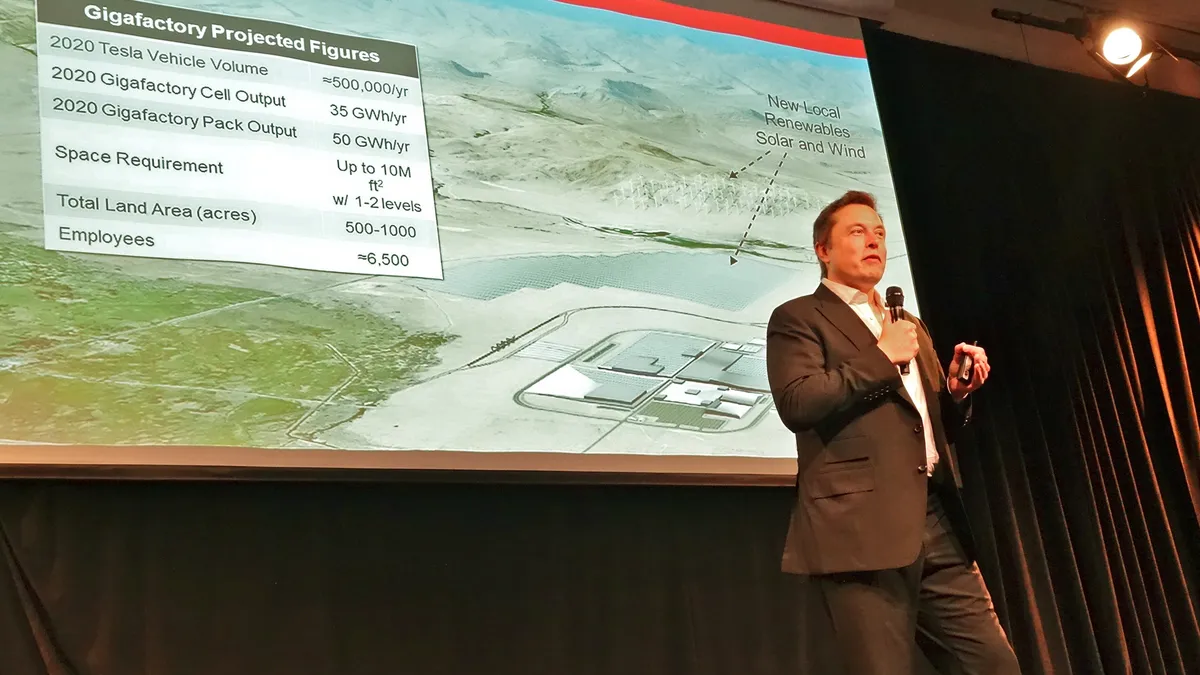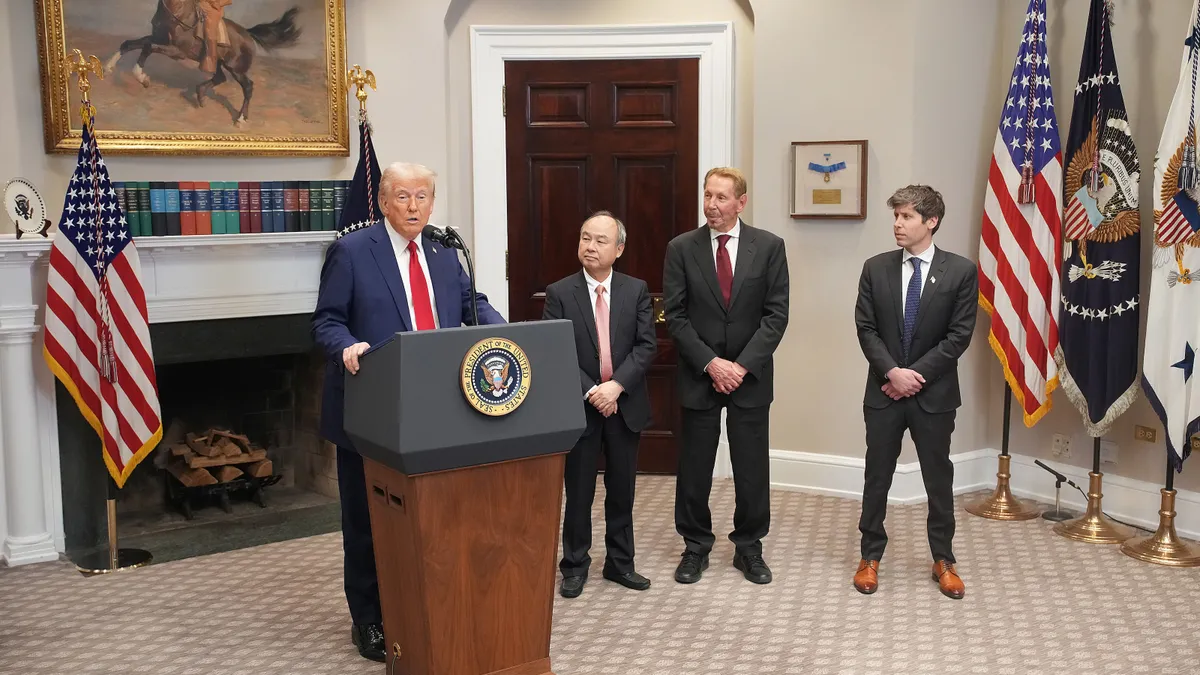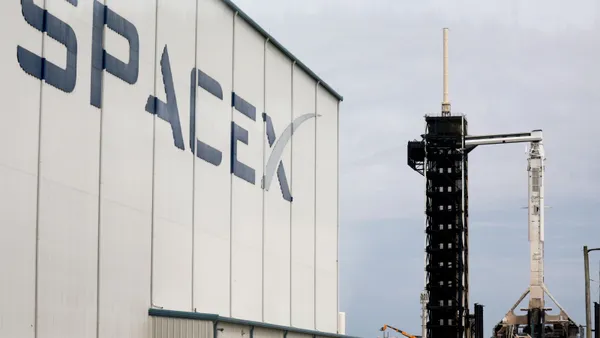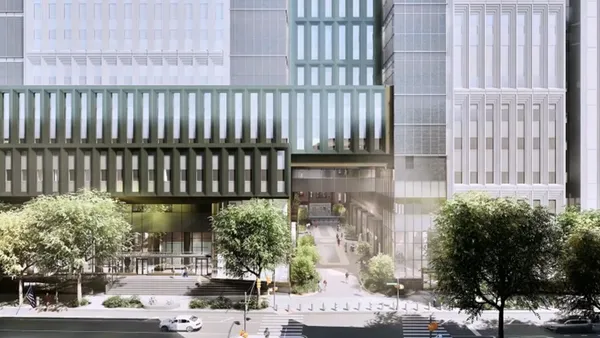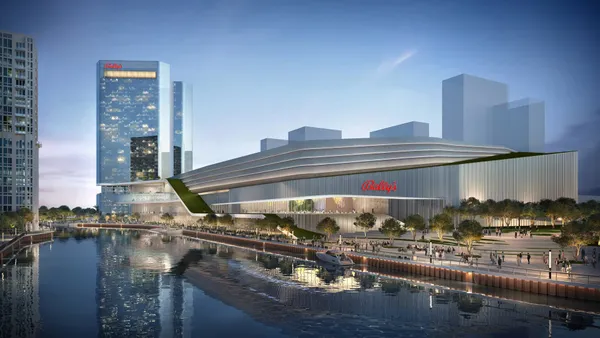Dive Brief:
- Tesla plans to install a 70-megawatt solar farm — the largest rooftop solar array in the world — on top of its $5 billion battery gigafactory in northern Nevada, according to The Verge.
- Tesla maintains that its solar farm will be seven times larger than the next-biggest rooftop array and will create enough energy to power its entire operation. Excess power generated by the photovoltaic panels will be stored using the company's Powerpack product.
- This solar strategy is an integral part of the company's stated goal of a net-zero energy facility, through which it will produce as much — or more — energy than it consumes.
Dive Insight:
Another energy-saving strategy at the gigafactory, according to 2015 statements from JB Straubel, Tesla’s chief technical officer, was to eschew natural gas pipelines in the structure's design so that there could be no future possible concessions regarding the company's no-emissions policy.
Construction on the Nevada gigafactory — expected to be fully functional in 2018 — is progressing, and battery production is already underway. It is widely believed that the solar panels Tesla will use to build its rooftop solar farm will come from SolarCity, which Tesla purchased last year. Soon after the acquisition, Tesla CEO Elon Musk announced that SolarCity would begin to market a relatively low-cost solar roof shingle that mimicked the look of high-end slate and terra cotta roofs, removing the aesthetic barrier of traditional, industrial-looking solar shingles and panels.
Tesla's solar ambitions, however, extend far beyond the U.S. and solar rooftops. In November, TechCrunch reported that Tesla and SolarCity were behind a solar microgrid project — funded by the Environmental Protection Agency, the Department of the Interior and the American Samoa Economic Development Authority — that aims to eliminate the island’s reliance on costly diesel generators by providing 72 hours of full power from a solar array that recharges with seven hours of sunlight.


